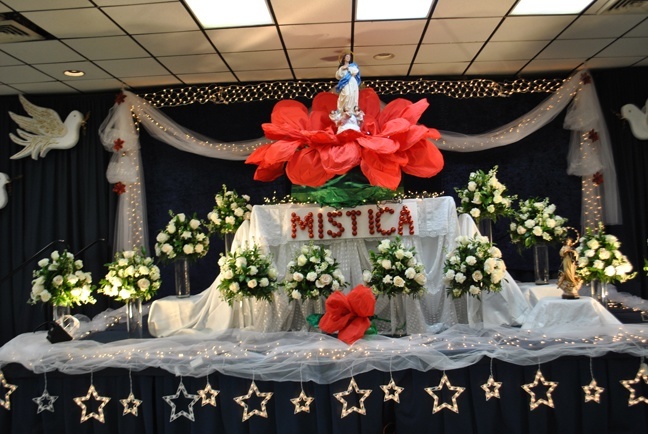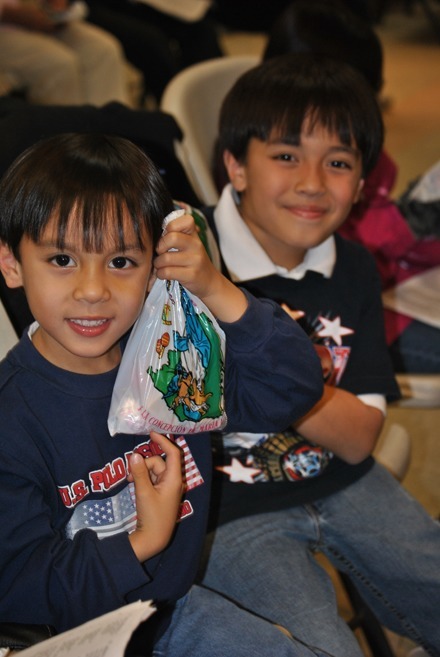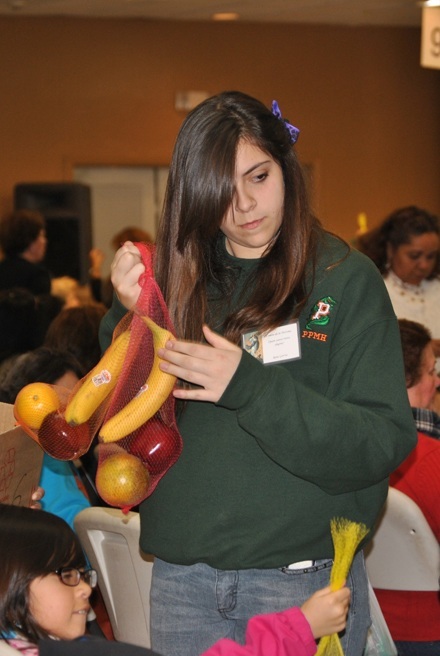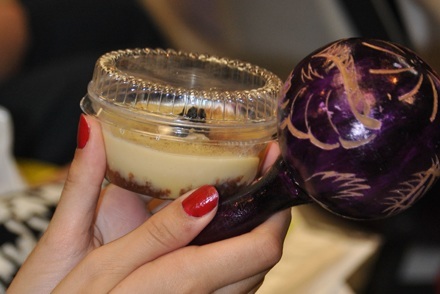By Blanca Morales - Florida Catholic
Photographer: BLANCA MORALES | FC View of the altar erected at Good Shepherd Church in Miami. Good Shepherd is one of a number of parishes that host a Pur�sima celebration Dec. 8 for their Nicaraguan-American parishioners. Many Nicaraguans set up similarly elaborate altars at home.
Photographer: BLANCA MORALES | FC Sebastian and Ricardo Paiz excitedly hold up a bag of candy they received. Inside it were a cajeta de leche (milk-based caramel fudge), pineapple pastries, and cajeta de coco (coconut fudge), among other candies.
MIAMI | Mary, under the title of the Immaculate Conception, may be patroness of the U.S. and Brazil, but it is Nicaragua that has given the Virgin homage worthy of a queen. In Miami, where there are many Nicaraguan-Americans, the observance of this feast day is just as fervent as it is in their mother country.
The image of the praying Mary looking heavenward is part of the cultural identity of Nicaraguans, particularly those who for sociopolitical reasons were forced to flee their native land.
The image was introduced to Nicaragua in the 16th century when St. Teresa of Avila gave one of her brothers an image of the Virgin Mary to take with him to the New World. Having made a stop in Central America, the saint's brother felt that the statue he carried had found its home in Nicaragua and he left it there for her devotees. The image became known as "La Virgen del Viejo," alluding to his old age.

Photographer: BLANCA MORALES | FC
A young volunteer, Rene Garc�a, passes out treats during the "Pur�sima" celebration at Good Shepherd Parish in Miami.
The image was later referred to as the Immaculate Conception and, in the years that followed, was said by locals to have answered prayers for physical healing as well as protection from pirates for those living in colonial towns.
Observance of the feast day involves the celebration of Mass, a novena, and La Purísima (literally, "the Purest Woman") also known as La Gritería (or, "the shouting"). The Purísima is a tradition in which garlanded altars are erected in front of the homes of devotees. Believers sing Marian songs in front of these altars, and as they travel from altar to altar in a single neighborhood, they are gifted with little trinkets given by the hosts in appreciation for their participation.
In the Archdiocese of Miami, several parishes host Purísima celebrations Dec. 8 to conclude the observance of this holy day of obligation. The altars, upon which an image of the Immaculate Conception is placed, are ornately set up in parish halls. Parishioners are then welcome to conclude the final novena prayer and participate in the singing, as well as the distribution of fruits, Nicaraguan candy and pastries.
This particular Marian devotion has been made famous by the acclamations to the Virgin Mary, hence the title "La Gritería." Devotees profess their love of the Virgin by shouting out phrases such as ¡Que viva la Virgin Madre (Long live the Virgin Mother)!"
Photographer: BLANCA MORALES | FC Pio Quinto, named after a pope, is a custard-topped cake, one of the many treats passed out during "Pur�sima" celebrations.
The most popular of all the phrases is, "¿Quien causa tanta alegria? ¡La Concepcion de Maria!" To Nicaraguans, this acclamation is a joyful cry of hope and identity: There is joy in knowing that the Blessed Mother watches over her children.
The famous Marian cheer is attributed to a priest from Leon, Nicaragua, who on Dec. 8, 1857, after the last prayer of the novena was recited, is said to have exclaimed, in a fit of Marian zeal, "Who causes so much joy?" at which the congregation answered back, "the (Immaculate) Conception of Mary!"
Since then, this phrase has been a significant part of the feast day's observance — indeed, it has become the celebration's slogan.
From an early age, children are taught to honor and respect the Blessed Mother, and even those who have migrated to the U.S. have taught their children this devotion.
Teresa Corrales, of Prince of Peace Parish in Miami, said she likes to bring her American-born grandchildren to parish Purísima celebrations so that they can learn about their Nicaraguan roots as well as learn to love Mary.
At Good Shepherd Parish in Kendall, the Purísima has been celebrated for the last eight years. According to Enrique Padilla, one of the organizers of the event, the Purísima is a community event involving volunteers who serve and donate resources for the giveaways.
"It's not only Nicaraguans in the event committee," he said. "There are people from all over: Venezuelan, Cuban, Colombian. We even want to welcome non-Hispanics to celebrate with us, because the Immaculate Conception is, after all, patroness of America and mother of all."

